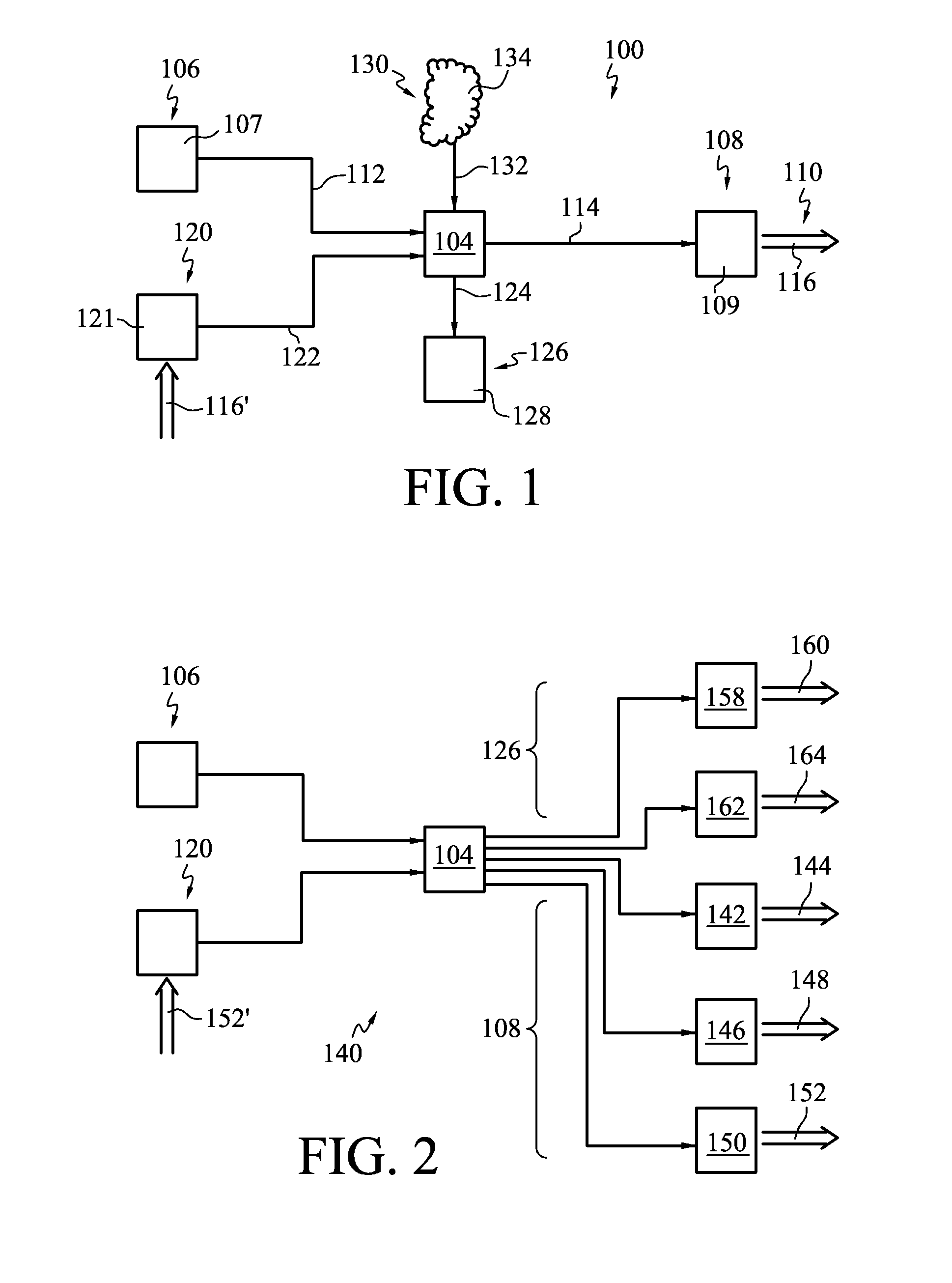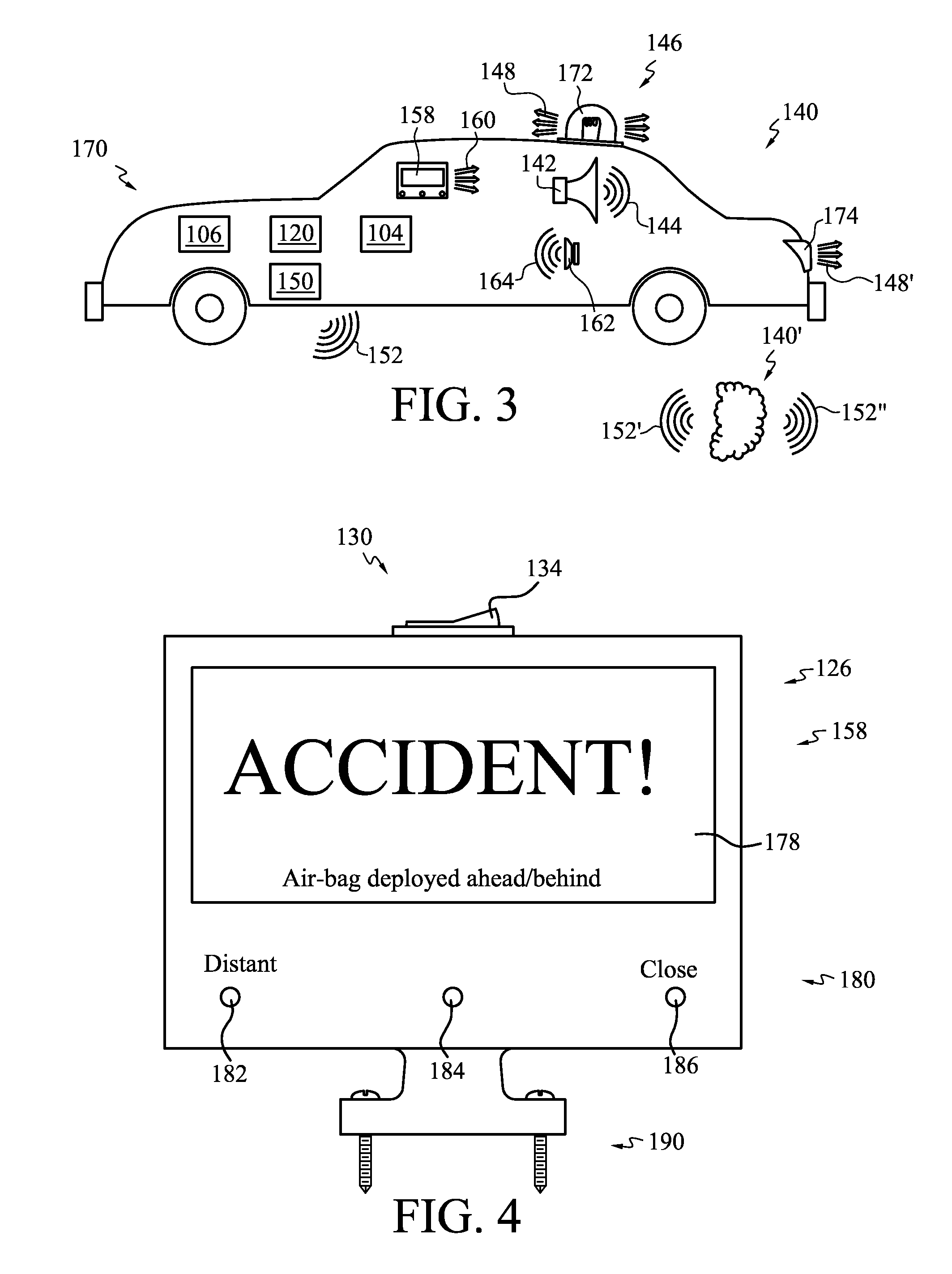Hazard warning system for vehicles
a technology for warning systems and vehicles, applied in traffic control systems, instruments, transportation and packaging, etc., can solve problems such as discrepancies in warnings to drivers, and achieve the effect of increasing the value or benefit of individual hazard warning systems
- Summary
- Abstract
- Description
- Claims
- Application Information
AI Technical Summary
Benefits of technology
Problems solved by technology
Method used
Image
Examples
second embodiment
[0051]With reference now to FIG. 2, a second embodiment, generally indicated at 140, includes a detector 106 in communication through a controller 104 to operate a remote warning signal transmitter 108. As illustrated, a remote warning signal transmitter 108 may be embodied as one or more of: an alarm 142 operable to transmit a loud sonic signal 144 that is audibly perceptible to approaching traffic (e.g., a siren); a warning light 146 operable to transmit a warning signal 148 that is visibly perceptible to approaching traffic (e.g., a flashing light); and a transmitter 150 operable to transmit a remote warning signal 152 that may be received by a signal receiving apparatus 120 carried in an approaching vehicle.
embodiment 140
[0052]Embodiment 140 also includes a receiver 120 in communication through controller 104 to operate a local warning device 126. A local warning device 126 may include one or more of: a local display element 158 configured to transmit a local signal 160 that is visibly perceptible to an occupant of the vehicle; and a speaker 162 configured to produce a local sound output 164 that is audible to the occupant. Display elements 158 may include, for example, LED and LCD display panels, one or more light that can emit individually distinguishable colors, an array of lights, a bar graph, a meter with a rotating needle, and the like. An audible signal 164 may be used in combination with a visual signal 160 to increase the likelihood that the operator of the vehicle will notice and heed the warning. The audible signal 164 and / or the visual signal 160 may be configured to be different from other signals conveyed to the vehicle operator (e.g., a low-fuel light, an emissions-control system ligh...
PUM
 Login to View More
Login to View More Abstract
Description
Claims
Application Information
 Login to View More
Login to View More - R&D
- Intellectual Property
- Life Sciences
- Materials
- Tech Scout
- Unparalleled Data Quality
- Higher Quality Content
- 60% Fewer Hallucinations
Browse by: Latest US Patents, China's latest patents, Technical Efficacy Thesaurus, Application Domain, Technology Topic, Popular Technical Reports.
© 2025 PatSnap. All rights reserved.Legal|Privacy policy|Modern Slavery Act Transparency Statement|Sitemap|About US| Contact US: help@patsnap.com



